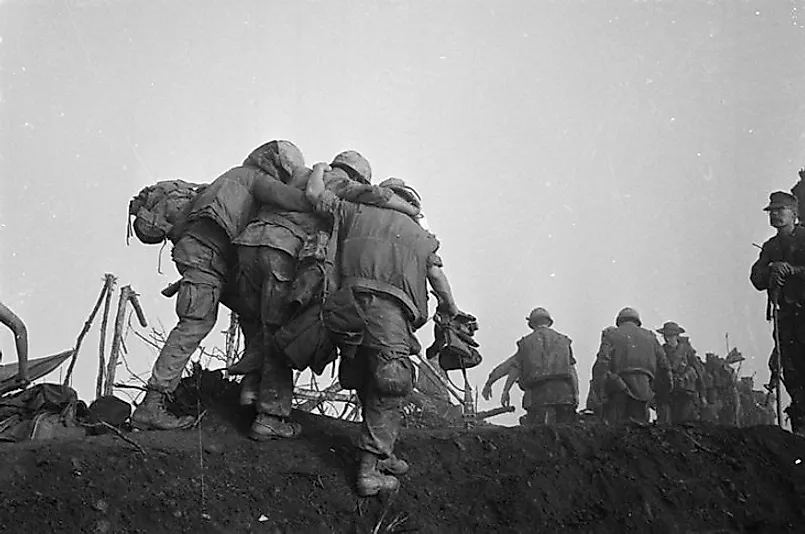Operation Dewey Canyon - Vietnam War

5. Background
In the wake of American public outcry for “Vietnamization” of the war and American withdrawal, U.S. military actions in Vietnam became increasingly urgent. The intent of Dewey Canyon was to destroy the forces of the North Vietnamese Army (NVA) located in the A Shau and Song Da Krong Valleys. The operation's objective was to destroy a major supply line of the NVA into South Vietnam and with this starve the communist forces of much needed ammunition and men. Operation Dewey Canyon consisted of 3 phases intended to end with the re-occupation of the valleys by American forces which had abandoned them the previous year.
4. Makeup
Colonel Robert Barrow commanded the operation with 2,200 marines from the 9th Marine Regiment, and the 2nd Battalion from the 12th Marine Regiment. While the Marines penetrated into the valleys, supporting actions by the Army's 101st Airborne Division and the South Vietnamese Army 2nd Regiment would be run east of the operations area to put pressure on any possible communist force intending to reinforce the valleys. On the North Vietnamese side, elements of 6 North Vietnamese Army Regiments took part in the fighting, totaling some 5,000 soldiers. Sitting near the Ho Chi Minh Trail on the Laos frontier, the North Vietnamese were able to receive effective artillery support from their 122 millimeter artillery.
3. Description
The operations lasted from January 22nd until March 18th in 1969. The Marines sought to make the most from their material advantage by setting up a network of mutually supporting artillery firebases all over the two valleys, and advancing cautiously under the security afforded by their guns. The helicopter also gave the Marines superior mobility and allowed them to redeploy quickly to any threatened sector. Meanwhile, the North Vietnamese Army in South Vietnam was a much more lightly equipped force and its tactic for the battle consisted on trying to stall the advance of the marines to gain time while they reinforced the valleys with more troops and artillery. Operation Dewey Canyon was carried out in 3 phases. Phase 1 (January 18th-25th) succeeded in establishing the firebases around the objective. Phase 2 (January 31st-February 5th) involved aggressive patrolling around the fire bases in an effort to engage the North Vietnamese Army. After several clashes with the North Vietnamese and bearing the shelling of Firebase Cunningham on February 2nd, the Marines succeeded in setting up 2 more fire bases. Phase 3 lasted from February 11th until March 18th, and involved a raid into the North Vietnamese Army supply chain infrastructure in Laos.
2. Outcome
Having achieved their objectives, the Marines pulled back into South Vietnam. The U.S. Marine Corps reported having suffered 130 killed and 932 wounded throughout the campaign. Meanwhile, the North Vietnamese Army saw 1,617 of its own killed, and an unknown number of wounded.
1. Significance
In spite of the operation being a success (it was a tactical victory for the U.S. Marines involved), Operation Dewey Canyon failed to cut the North Vietnamese Army's supply line, and the flow of guns and reinforcements kept flowing into their strongholds in South Vietnam. Nevertheless, there was little more that the Marines could do. Washington had decided to give way unto the public opinion pressure and had started a quick change of policy of "Vietnamization" of the war, by replacing the use of American troops in the war and with South Vietnamese soldiers. 1st Lieutenant Archie Biggers was awarded the Silver Star for his valor in Operation Dewey Canyon, and the 9th Marine Regiment was awarded a Presidential Unit Citation.











